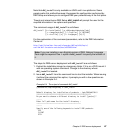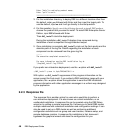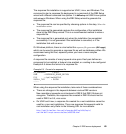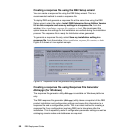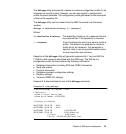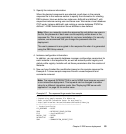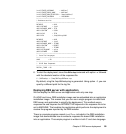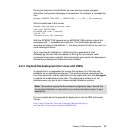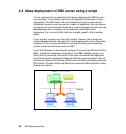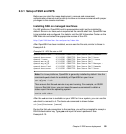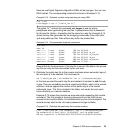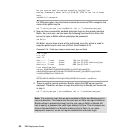
Chapter 2. DB2 server deployment 55
inst2.FENCED_USERNAME = db2fenc7
inst2.FENCED_GROUP_NAME = db2fadm7
inst2.FENCED_HOME_DIRECTORY = /home/db2fenc7
inst2.FENCED_PASSWORD = <PASSWORD>
*----------------------------------------------
* Database section
*----------------------------------------------
DATABASE = db01
db01.INSTANCE = inst1
db01.DATABASE_NAME = ITSO
db01.LOCATION = LOCAL
db01.ALIAS = ITSO
db01.PATH = /tmp/db2rsp/db01
DATABASE = db02
db02.INSTANCE = inst2
db02.DATABASE_NAME = ITSODB
db02.LOCATION = REMOTE
db02.ALIAS = ITSODB
db02.SYSTEM_NAME = zaire
db02.SVCENAME = 50000
*-----------------------------------------------
* Installed Languages
*-----------------------------------------------
LANG = EN
*-----------------------------------------------
* SA MP Base Component
*-----------------------------------------------
INSTALL_TSAMP = NO
6. To start the deployment, issue the db2setup command with option -r followed
with the absolute location of the response file:
# ./db2setup -r /tmp/db2rsp/db2ese.rsp
By default, a log file /tmp/db2setup.log is generated. Using option -l, you can
specify a different path for the log file.
Deploying DB2 server with application
We can deploy the DB2 server and application with only one step.
On UNIX and Linux, DB2 installation image can be embedded into an application
installation image. This means that you can use a single program to install both
DB2 server and application to simplify the deployment. This method uses a
response file and requires the INTERACTIVE keyword in the response file to be
set to MACHINE. That enables the application which performs the deployment to
receive the progress reported by the DB2 installer.
There is a sample program named InstallTester included in the DB2 installation
image that demonstrates how to embed a response file based DB2 installation
into an application. The sample program is written in both C and Java language.



